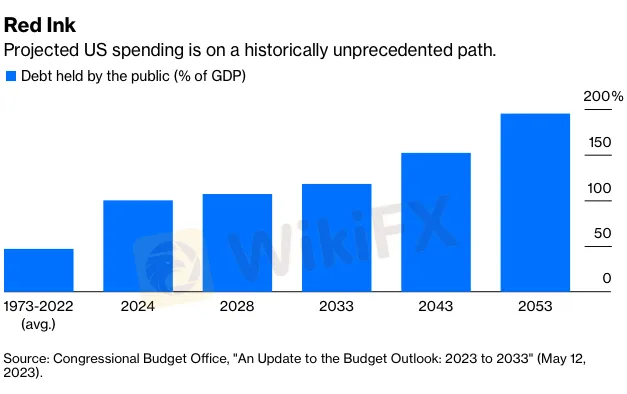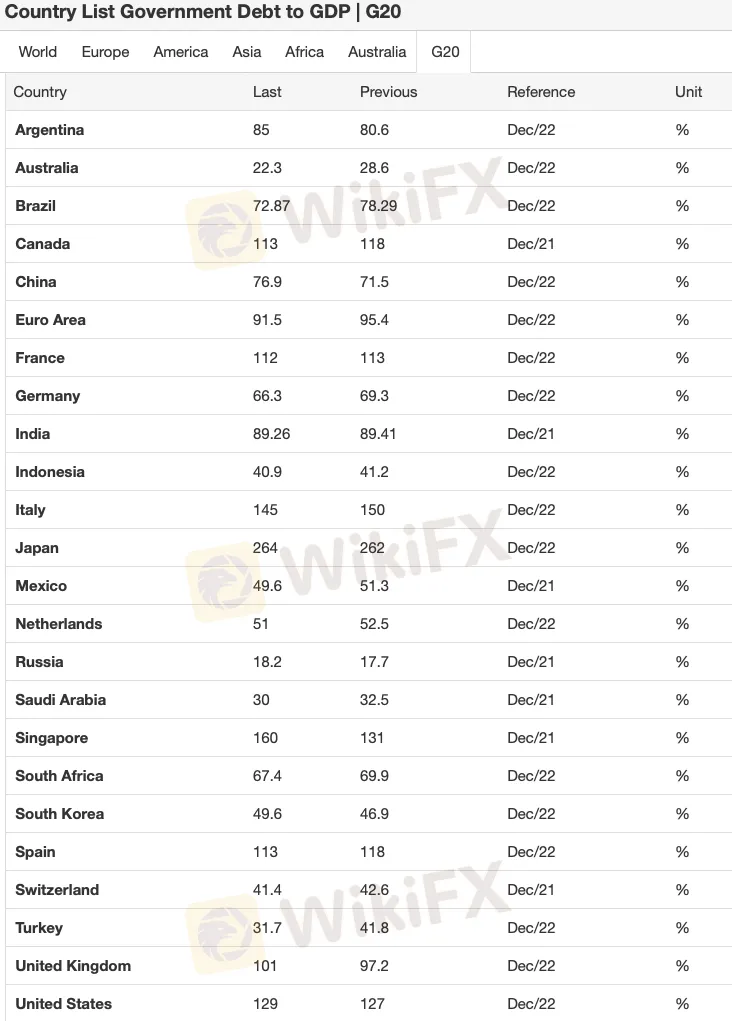Debt ceiling suspended, but challenges persist
Zusammenfassung:Based on the recent piece of opinion released by some news agency highlighted that the latest budget deal successfully suspended the debt ceiling, averting a potential debt default. However, it also pointed out that this measure does little to address the United States’ long-term fiscal challenges, as US deficits continue to accelerate.

Based on the recent piece of opinion released by some news agency highlighted that the latest budget deal successfully suspended the debt ceiling, averting a potential debt default. However, it also pointed out that this measure does little to address the United States long-term fiscal challenges, as US deficits continue to accelerate.
Escalating US debts
According to the Congressional Budget Office, the US is projected to have deficits exceeding 5% of its Gross Domestic Product for an extended period. In the next decade alone, the countrys total debt is expected to reach approximately $20 trillion. Despite the recent agreement, this reduction is a mere $1.5 trillion. The debt-to-GDP ratio, which compares the US debt to its income, will continue to rise and is estimated to reach around 115% by 2033, with further increases projected beyond that. By the middle of the century, US debt could potentially approach 200% of the public debt-to-GDP ratio.

Concerns and projections
The article also highlights that these projections are somewhat optimistic, as they do not account for potential events like another global financial crisis or urgent need for investment due to factors such as global warming. These factors could significantly impact the US debt landscape and necessitate additional financial measures.
Where does that put the US in the G20 rankings?
Among G20 nations, the United States currently holds the second-highest debt-to-GDP ratio, second only to Japan. However, it is crucial to note that Japan‘s ratio stands at a significant 264%, making it an outlier in this regard. Japan has managed to finance its debt due to its large domestic investor base, strong savings culture, and intervention by the Bank of Japan in the bond market. Nevertheless, the long-term sustainability of Japan’s debt remains a concern.

The larger the US debt becomes, the more and more concerns there will be surrounding how that debt is managed. Expect this to become more and more of a focus in US politics moving forward, but for now, there is no immediate danger for the US from its high debt-to-GDP ratio.

WikiFX-Broker
Aktuelle Nachrichten
Blackrock-Strategin erklärt: Warum Gold jetzt eine bessere Absicherung ist als US-Staatsanleihen
Chinas Exporte sind im März gestiegen – aber die US-Zölle könnten bald alles verändern
Die Gold-Rally ist wohl doch noch nicht vorbei: Goldman Sachs erhöht Prognosen
Meta startet KI-Offensive in Europa – so nutzt der Facebook-Konzern auch eure Beiträge dafür
MHP, Audi und Lamborghini: Das sagt Volkswagen-Chef Blume zu möglichen Ausverkäufen
Teuerstes Ostern aller Zeiten: Schokolade und Eier kosten 40 Prozent mehr als 2020
Trump erwägt Ausnahme bei Zöllen für Autohersteller – Aktien steigen an
Preise für klassische Osterprodukte ziehen stark an – Schokolade ist um 40 Prozent teurer geworden
Ab diesem Gehalt gehört ihr in Deutschland zu den oberen 10 Prozent – schafft ihr es?
Luxus-Krise bei LVMH: Anleger verlieren Vertrauen in Louis Vuitton, Dior und Co. – Aktie bricht ein
Wechselkursberechnung

